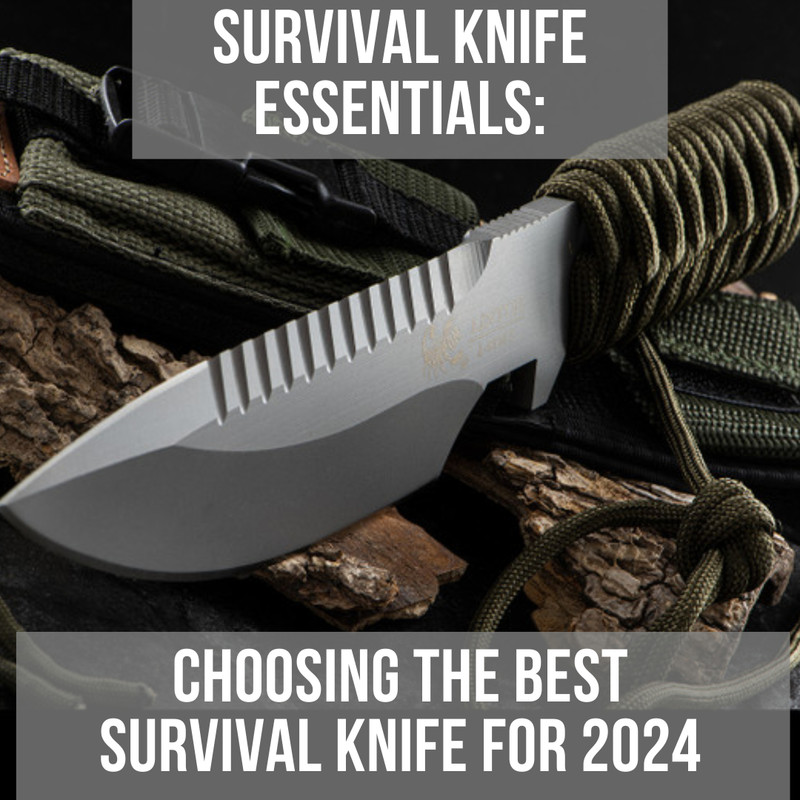How to Build a Survival Kit | Essential Gear
Posted by HH on 30th Aug 2024
A well-assembled survival kit is more than convenient; it’s a necessity. It keeps you fuelled and ensures you have what you need in case of an emergency. At Heinnie Haynes, we’ll guide you through the essentials of building a survival kit tailored for outdoor adventure survivalists.
Survival kits, by definition, come in a variety of sizes and contain supplies and tools to provide survivors with basic shelter against the elements, help them to keep warm, meet basic health and first aid needs, provide food and water, signal to rescuers, and assist in finding their way to help.
1. Understand Your Environment
Before you start assembling your survival kit, it’s important to understand the environment you’ll be exploring, while planning for the unexpected. Different terrains and climates present unique challenges. For instance, a survival kit for a desert hike will differ significantly from one intended for a snowy mountain trek, but a basic survival kit should equip you for every eventuality - you never know when you might need it.
Consider factors such as:
- Climate (temperature, humidity, precipitation)
- Terrain (mountains, forests, deserts, etc.)
- Wildlife (potential threats and resources)
2. Choose the Right Container
Your survival kit should be compact and lightweight yet durable enough to withstand the rigours of outdoor use. Consider using a waterproof backpack, a dry bag, or a sturdy container. Ensure that it has multiple compartments for organisation, allowing you to quickly access items when needed.
Also, consider a stainless steel 32oz bottle or a canteen with a metal cup as they can be placed directly over a fire to disinfect water and can double as cooking equipment
3. Essential Items to Include

Your cutting tool should be capable of handling any task, especially in the event of a complete equipment failure. A survival knife with a 5 to 6-inch blade and a full tang is ideal, as it strikes a balance between strength and precision, suitable for tasks ranging from carving to food preparation.
Alternatively, a small hand axe can be a viable option if you're proficient in using it for more delicate tasks. Multi-tools and pocket knives are often carried for emergencies, but they shouldn’t be your primary tool due to their size and strength limitations.
A high-carbon steel blade is preferred over stainless steel, as it can also serve the secondary function of sparking flint for fire-starting, especially in situations where other methods fail or are unavailable.
- Water Purification Aid
- Water Bottles or Hydration Bladder
- Food Supplies
- A small fishing kit can provide food in survival situations.
- Cover or shelter equipment should be lightweight, compact, and versatile. A basic setup could include a tarp, a large heavy-duty bin bag, and a reusable Emergency Foil Blanket.
These items offer protection from the elements and can also be used for a variety of other purposes, such as water collection, ground insulation, and even emergency signalling
Your fire-starting tools should be reliable in any condition. Rather than relying on lighters, which may fail in wet conditions, consider tools such as Ferrocerium rods.
These devices provide reliable ignition, even when wet, and are ideal for lighting damp tinder. The Ferro rod offers thousands of strikes, making them an invaluable part of your survival kit.
- Map and Compass: Always have a physical map and a compass, even if you carry a GPS device.
- Whistle: For signalling for help without exhausting your voice.
- Emergency Mirror: Useful for signalling and can also help with first aid.
- Multi-Tool or Knife: Versatile tools can assist in various tasks, from food preparation to gear repair.
- Paracord: Essential for survival tasks like shelter building and, fishingWhile 550 paracord is a popular option due to its strength and versatility, tarred bank line is often a better choice.
- Duct Tape: A quick fix for a variety of gear issues.
- Extra Clothing: Pack a spare pair of socks, a warm hat, and gloves.
- Sunscreen and Insect Repellent: Protect yourself from the elements and pests.
Every survivalist has unique needs based on their skills, the duration of the trip, and personal preferences. This is just a guide, tailor it to your needs.
4. Regularly Check and Update Your Kit

Your survival kit should be a living document. Regularly check its contents to replace expired food, medications, or worn-out gear. Adjust your kit based on the season or specific trips you have planned.
5. Practice Using Your Kit
Having a survival kit is only part of the equation. Familiarise yourself with each item and practice using them. Conduct mock scenarios to build confidence and ensure you can act quickly in an emergency.
Building a survival kit is a vital step for any survivalist. Understanding your environment, choosing the right kit, and including essential items can enhance your preparedness for any situation. Remember, the best survival kit is one that meets your specific needs and is regularly updated. Stay safe, stay prepared, and enjoy your next adventure.







